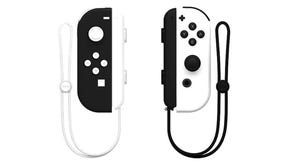Sony creates custom PS3 hardware for PlayStation Now
Dedicated servers house eight PS3s, built from the ground up for cloud gameplay.
Sony has developed brand new PS3 hardware to power its PlayStation Now streaming service, revealed earlier this month at CES in Las Vegas. Sources who have been briefed on the project suggest that the new PlayStation 3 consists of eight custom console units built into a single rack server. It's the new PlayStation hardware that everyone will have access to, but few will actually see.
Initially, Digital Foundry has learned that Sony experimented by placing standard retail units into datacentres, but plans to use this for the actual PlayStation Now service were shelved for a number of reasons. For starters there's the sheer space requirement, along with power efficiency issues, as even the most recent PS3 hardware can still draw up to 80W from the mains. Sony's engineers were able to mitigate both issues by shrinking the equivalent of eight PS3s onto a single motherboard, housed in a slimline server cabinet.
The second reason for the all-new PlayStation 3 server design is that it allows Sony to make hardware changes to the PS3 configuration that claw back a few vital milliseconds here and there to lower end-to-end latency.
To understand this, we start by looking back at the PC-driven OnLive and Gaikai services, which are very similar. The idea with those services is that games run at 60Hz (or even higher) on PC hardware, lowering end-to-end latency by something in the region of 50ms compared to the console 30fps standard. Second-gen cloud hardware like GeForce Grid actually improves on that significantly by tying the video encoder directly into the graphics hardware.
These latency-saving measures are then offset against the cloud streaming workflow - video encode, transmission over the internet, and client-side decode. In a very best-case scenario with OnLive and Gaikai, we can see input lag that is very, very close to a 30Hz console experience. Indeed, in our original Gaikai testing, we were able to play Bulletstorm with an end-to-end latency that occasionally hit 133ms - the same as the Xbox 360 version. It was an exceptional result (one captured for posterity if you're interested), but as a proof-of-concept it was extremely effective - and achieved on a standard ADSL connection.
Unfortunately, this specific avenue of latency-saving is almost certainly not open to PlayStation Now. In order to retain compatibility with the existing library of games, the code-facing hardware within PlayStation 3 cannot be changed significantly: Cell and RSX - the CPU and GPU of the veteran console - can't be radically changed without introducing incompatibilities with the existing library of software. This presents a problem: the majority of PS3 titles run at 30 frames per second with input latency in the region of 100-150ms. Add on the cloud overhead and you're looking at a rather unsavoury, laggy experience.
"The majority of PS3 titles run at 30 frames per second with input latency in the region of 100-150ms. The cloud overhead on top would provide an unsavoury experience, necessitating a new hardware solution."

Gaikai was primarily a software team, but once it was bought up by Sony it was suddenly faced with a problem that could only be tackled by bespoke hardware. In creating new PS3 servers for the PlayStation Now, the team worked closely with their new colleagues in engineering, creating a new PS3 adapted to the cloud streaming challenge. The "secret sauce" of the new design remains just that - in its briefings to publishers participating in the current closed beta testing, Sony has only revealed rough details of the servers - but we can make some educated guesses on how the existing PS3 design could be tightened up for improved cloud gameplay.
First of all, while we expect the basic designs of Cell and RSX to remain untouched, non-critical areas of the hardware can be upgraded. The network interface could be improved with a lower-latency interface, while the controller inputs could be swapped out with faster, hard-wired alternatives to the current wireless Bluetooth option used by the DualShock 3. Potentially, the polling rate of the controller inputs themselves could be increased significantly via a custom version of the PlayStation 3 operating system.
A more significant latency saving could be achieved by bypassing the PS3's HDMI output altogether. Scan-out - the process of displaying the current framebuffer on-screen - takes 16.67ms. A PlayStation 3 cloud server could see the frame dispatched to a hardware h.264 video encoder as opposed to the existing console's HDMI output.
By our estimates, the design tweaks we've suggested could (generously) only claw back around 30ms. That would fall some way short of the potential performance of cutting-edge systems like GeForce Grid, but there may well be further nips and tucks added to the design that could cumulatively produce a more significant saving on overall lag. The Gaikai team have the advantage of complete access to the PS3 design and the engineers that created it, so it may well be that there other latency-saving elements we simply can't anticipate. Only direct comparisons of end-to-end latency testing on PS3 and PlayStation Now can reveal how successful the team has been.
"The leaked roadmap gives some sense of the ambition Sony has here - PlayStation Now isn't just reserved for Sony TVs and consoles. Partners are also invited to add the service to their devices."

In the meantime, at the CES PlayStation Now reveal earlier this month, comments on lag varied between an enthusiastic "gameplay latency was a non-issue" from the official PlayStation blog, to a more measured response from Polygon, who described the experience as having "noticeable" input lag, though gameplay remained "more than playable".
The experience looks similar to PS4 Vita Remote Play based on Polygon's hands-on video. The site reveals that the server was actually situated locally - in the same room, in fact - with the assumption being that PlayStation Now was running on a local network. Quite how good the overall experience is over the internet remains to be seen, then, but it is important to point out that the perception of latency varies from person to person. There will always be a trade between response and convenience, but clearly some game types will suit cloud gameplay more than others, while some people may not notice that much difference at all.
That's where we are with PlayStation Now for now. The system is currently undergoing internal testing (we understand it is localised to southern California), which expands into a public beta at the end of January, according to Sony boss Andrew House. According to our sources, the service then rolls out to the USA in Q3 of this year (House has publicly targeted summer), before Japan and Korea gets their chance to sample the service towards the end of 2014. Europe has the longest wait of all, with PlayStation Now set to arrive in the first quarter of 2015 according to our sources. As you can see from the exclusive slide on this page obtained from a PlayStation Now presentation, Sony's own "SEL" devices like Bravia TVs get support in Q3 this year, with "partners" getting access to the functionality a little later.
It will be interesting to see who those partners actually are, but it all points to a future where PlayStation isn't just about traditional console gaming, but an online service available to a range of different devices - not necessarily Sony-branded. All that's required is an interface with a joypad and an h.264 video decoder: smartphones, tablets, televisions - in theory, the sky is the limit. The big questions concern the quality of broadband infrastructure, the strategy behind placement of datacentres, and whether the quoted 5mbps video stream offers up enough bandwidth to a level of video quality good enough to sustain a true PlayStation experience. We'll find out more in the months to come.









